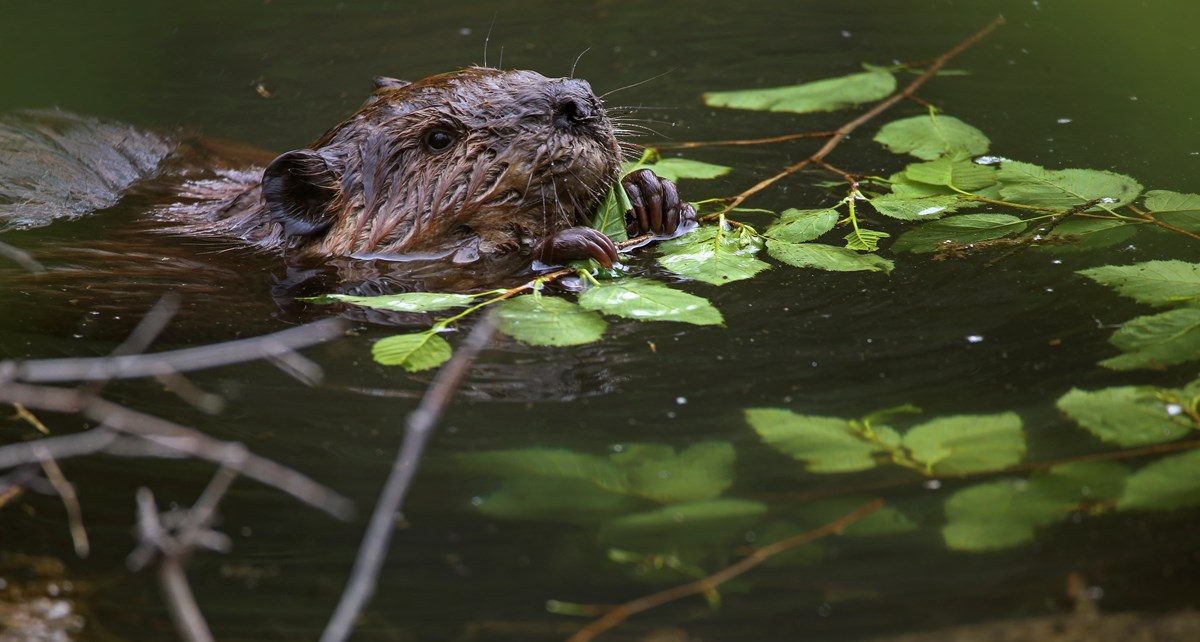Why we don't relocate beavers
We often gets calls from folks who want 'problem beavers' removed from a settled site (where beavers have moved in). We also get calls from folks who see the benefits of beaver activity and so want beavers delivered to their property.
Matching folks who don't want beavers with those who do - it sounds like a "win win win".
This beaver program started with an idea to provide beaver relocation services. We sought out the training and tools. We got current on state policies around moving beavers. We talked to different folks in land and wildlife management: private landholders and restoration agencies stewarding the land, other beaver organizations and our local ODFW biologists.

Here's what we learned and why we don't relocate beavers:
- There's trauma and loss caused to beavers through relocation activities: capture, handling and release
- Removing a 'problem beaver' (or beaver family) away from a location generally doesn't work over the long term
- Stream restoration goals quite often are not achieved by importing in a family of beavers
- In short: Whether beavers are wanted or not wanted at a given location, beaver translocation as a policy and practice does not effectively address the root problems of a lack of habitat or infrastructure conflicts.
And so, while relocating beavers is often presented as a happy occasion and "go to solution" – ‘rescue a beaver who would otherwise be killed’ – we’ve come to view relocation with concerns. It's why we don't relocate beavers as a service.
Here's a closer look:
1. Relocation doesn't work for the Beaver/s
Here's why relocation doesn't work for the beavers, as individuals, as families and at a population scale:
- Beavers are easily stressed by human handling. Wild beaver individuals are known to be quite shy, they easily stress, they will hide in captivity as much as they're allowed. You can imagine handling by a predator species - man - causes trauma for any wild non-human animal, and especially for beavers. Veterinary handling of an injured beaver patient is minimized to the extreme - more so than any other wildlife patient - when in care by the veterinary specialists at wildlife hospitals. (Learn more about Capture Myopathy in mammals)
- Complex family dynamics. Much like human families, beaver families are very bonded with rich, complex relationships. Yearlings care for their kit siblings, they mentor each other on dam repair, den building and more and stay with their family unit for a full two years before dispersing. Live trapping a beaver family intact for relocation can be challenging, and families can be permanently separated in attempts to live trap and relocate a family to another site.
- Capture loss and family separation through 'live-trapping' methods.
Early in our program training we observed the professional live-trapping of a family of 4 'problem' beavers (two adults, two young kits). One of the adults and one kit were caught in the live traps as intended. Sadly, the 2nd kit was killed by the live trap on closure, leaving the 2nd of the adult pair to remove from the pond. Over the next two nights however, this remaining adult was never captured to be reunited with her mate and surviving kit. In one evening of trapping to relocate, this mother's family was lost. She had moved on. This outcome could have been prevented with the installation of a flow device to address the homeowner's flooding concern, but this solution had never been considered. Instead, a reflex response to 'problem beaver calls' had been built over the years around relocation, instead of exploring mitigation solutions and living with the beavers. Unfortunately, outcomes like these for beavers are not uncommon when "relocate to rescue" is the go to response. - Disease spread. Beaver relocation is complicated also by the risk of disease transmission between relocated beavers and resident beavers within a release watershed. Disease spread concerns from one beaver population to another include cryptosporidium, tularemia, plague, and lysteriosis. These diseases can be deadly, and deaths by disease spread have been documented after relocations.
BEAVER RELOCATION MATH
In first-hand accounts and a review of published research reports from around the West, here's the Math around beaver relocation:
- Mortality on capture: 0% - 10%
The most common live-traps in use (the Hancock trap, or similar) are antiquated in design, challenging to set and prone to cause drowning, trauma and/or deadly injury. (In the study datasets reviewed [sources below], 7 in 12 reported capture mortality) - Mortality in handling and husbandry: 0% - 10%
Beavers are one of the shyest mammals there are, and stress very easily even with the most experienced handlers. (In the study datasets reviewed [sources below], 5 in 12 reported captivity mortality) - Removal success rate at "problem beaver" sites: about 25%
The likelihood is low that a site will stay "beaver free" after removal of an established individual or family after 2-3 years. Other dispersing beavers will fill that space. - Release success rate (beavers successfully stick around): 25% - 35%
Beavers will often leave the target release site in search of better food sources and optimal conditions to settle. In traveling, they're the most vulnerable to predation and starvation.
___________
Sources:
- 12 published reports (Reference this Compilation of 12 documented Beaver Studies and Reports through Sept 2023)
- The Beaver Institute
- First hand accounts by Western Beavers crews
2. Relocation often doesn't solve a “problem beaver” situation
If the conditions are ideal enough at a location for a beaver to settle, start tree-felling, den-building, damming, and even family building beavers will continue to do so – time after time. So "live-trapping" an existing beaver (or family) for relocation is often only a short term answer for the land steward with a "beaver problem". Here's why:
- Nature will fill the vacuum. At vacated locations (where beaver have been removed), other beavers will move in an average of 75% of the time within 2 years of beaver removal, reports the Beaver Institute.
- Better solutions often exist through infrastructure adaption and "living with beavers". Mitigation solutions like flow devices, culvert protectors or tree fencing can prevent blocked water from flooding things out and trees from felling. The materials are easy to source and install, and allow the beavers to stay in place - providing ecosystem benefits.
Most states offer "living with beavers" solutions through infrastructure adaptions as the more cost-effective and humane solution for sites with beaver problems. Learn more at the Beaver Institute, or here in eastern Oregon about technical assistance around beaver devices and solutions.
3. Relocated beavers to aid restoration goals often leave the release site shortly after release
Published reports around beaver relocation outcomes, suggest on average that beavers will stick around (remain at the target release site) only 25% to 35% of the time.
There are a number of different reasons why beavers disappear from a target location after being released, that may include:
- suboptimal release sites without the conditions that beavers need to succeed, forcing the beaver/s to move on;
- predation by bear, mountain lions or others;
- conflicts with other nearby beavers who may already be present or passing through within a territorial reach;
- lack of food that beavers need for den and dam building; and
- premature death caused by stressors of human capture, handling, and release.
Relocation as a "go to" solution addresses symptoms and not the problem on many western landscapes – the absence of the conditions that beavers need to succeed and thrive, naturally.
